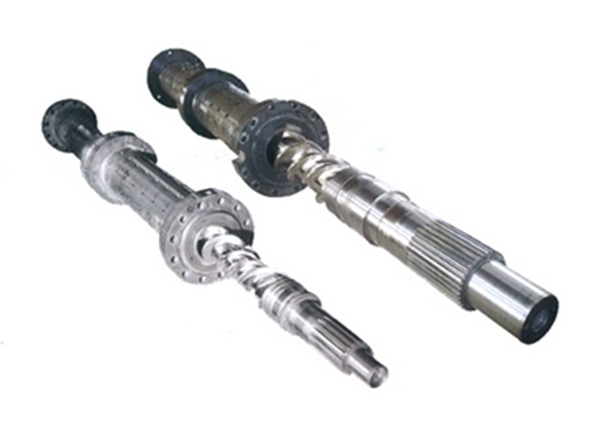+86-0580-8052088
+86-13505800981
No. 20, Liguan Road, Jintang Town, Dinghai District, Zhoushan, Zhejiang, China
Screw extruders are divided into single-screw extruders […]
Screw extruders are divided into single-screw extruders and multi-screw extruders. The single screw extruder is the most important type of extruder in the polymer industry. Its main advantages are low cost, simple design, sturdiness and reliability, and satisfactory performance-to-cost ratio. The screw of a conventional plasticizing extruder has 3 different geometric sections:
This geometric shape is also called "single stage". "Single-stage" means that although the screw has 3 different geometric sections, in fact there is only one compression section. The first section (closest to the feed port) has a relatively deep groove. Most of the materials in this section are in a solid state. This section is called the feed section of the screw. The grooves in the last section (closest to the die) are usually shallow. Most of the materials in this section are in a molten state. This cicada rod section is called the metering section or the extrusion section. The second section connects the feed section and the metering section. This section is called the transition section or compression section. In most cases, the depth of the screw groove (or the height of the screw edge) decreases linearly from the feeding section to the metering section, so that the material undergoes compression in the screw groove. In the future, it will be proved that this kind of compression is essential to the correct operation of the extruder in most quiet situations.

Basic operation:
The operation of the single screw extruder is quite simple. The material enters from the hopper. Usually the material flows into the extruder barrel from the hopper by gravity. Some materials are not easy to flow in the dry state, and special measures must be taken to prevent the materials from hanging in the hopper. Once the material falls into the extruder, it is in the annular space between the screw and barrel of the extruder, and is then surrounded by the active and passive wing grooves of the spiral ribs. The machine is stationary while the cicada rod rotates. Therefore, the frictional force acts on the material and the surface of the barrel and screw. At least the object is in a solid state (below the melting point), and these friction forces are responsible for transporting the material forward.
When the material moves forward, it is heated by the heat generated by friction and the heat conducted by the barrel heater. When the temperature of the material exceeds its melting point, a molten film is formed on the inner surface of the barrel, and the plasticizing section begins. It must be pointed out that the starting point of the plasticizing section is usually not the starting point of the compression section. The dividing line of each functional segment depends on polymer properties, extruder geometry and operating conditions. Thus, the dividing line can be changed due to changes in operating conditions. However, the geometric section of the screw is determined by design and does not change due to changes in operating conditions. When the material moves forward, the amount of solid material in each position will be reduced due to melting. When all the solid polymer disappears, the end of the plasticizing section is reached, and the melt conveying section begins. In the solid conveying section, the melt is uniformly conveyed to the die.
When the polymer flows into the die, it assumes the shape of the die runner. Therefore, when the polymer leaves the die, its shape more or less conforms to the cross-sectional shape of the last part of the die runner. Since the die produces flow resistance, pressure is required to force the material through the die. This pressure is usually called die pressure. The die pressure is determined by the shape of the die (especially the runner), the temperature of the polymer melt, the flow rate through the die, and the rheological properties of the polymer melt. The die pressure is generated by the die and not by the extruder. The extruder just generates enough pressure to force the material through the die. If the polymer, extrusion volume, die and die temperature are the same, no matter whether the extruder is a gear pump single-screw extruder or a double-screw extruder, there will be no difference, and the head force is the same. Therefore, the die pressure is caused by.
Copyright:Zhoushan Tianxiang Screw Factory
China Conical Twin Screws ManufacturersTechnical Support: HWAQ